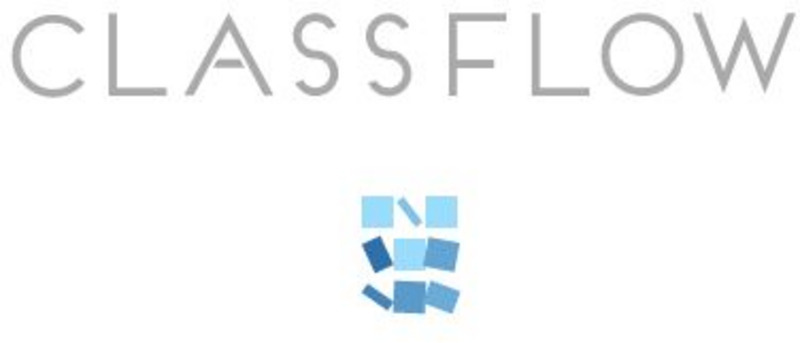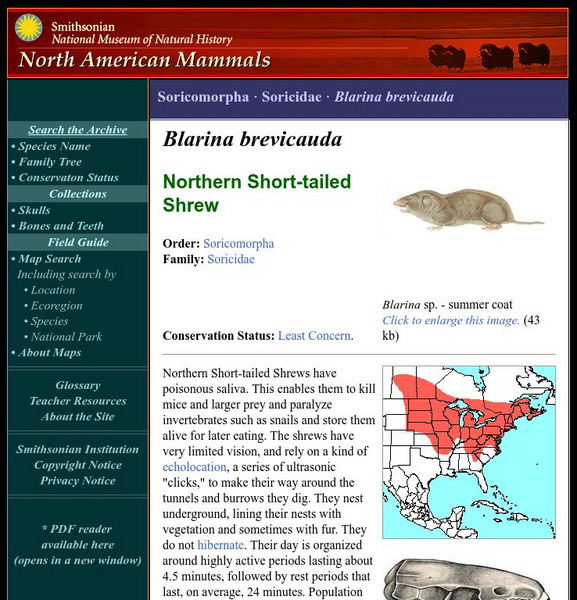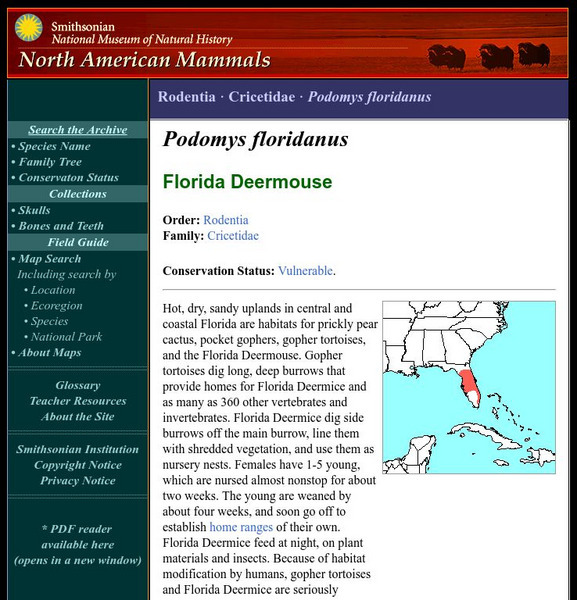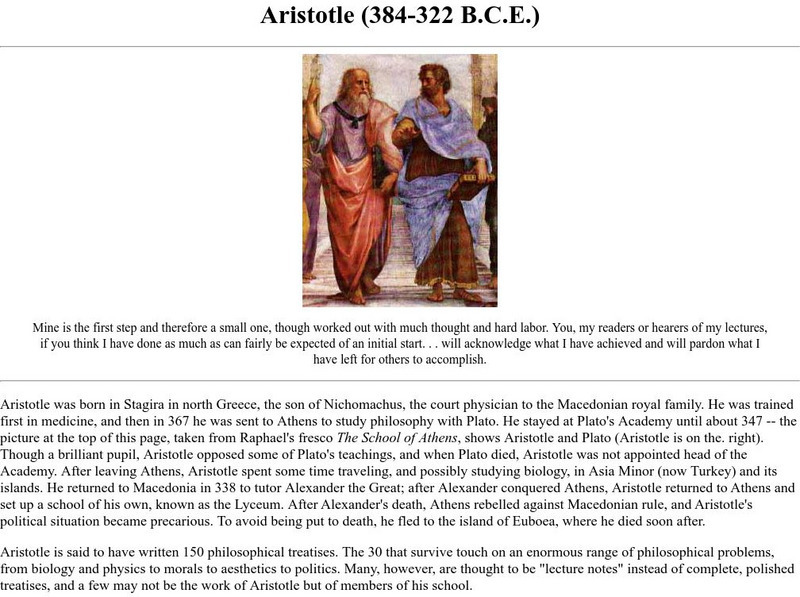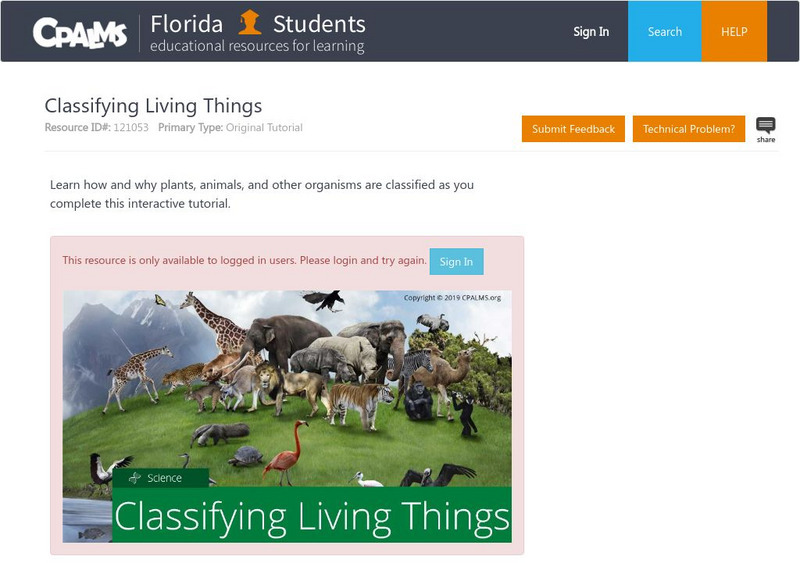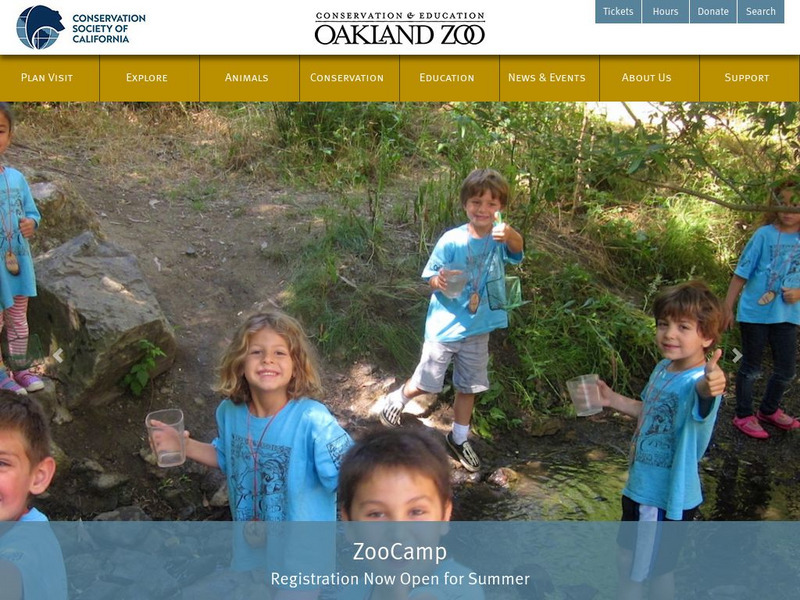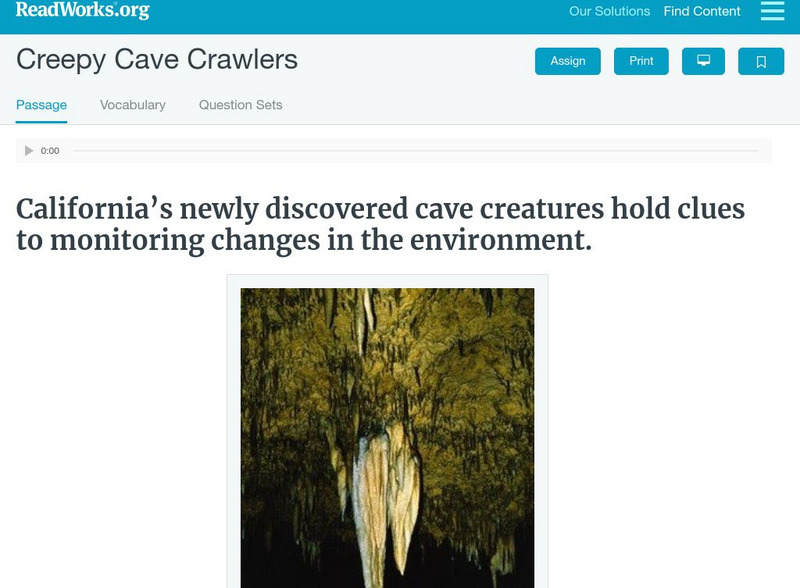Other
Ocean Oasis: Field Guide
Ocean Oasis is a giant-screen film that depicts Mexico's Sea of Cortes and the Baja California desert. This companion site features much of the information the film has, such as beautiful images of animals, water, and land that have...
Smithsonian Institution
National Museum of Natural History: Search the Giant Squid
This site explores, in detail, what is known about the Giant Squid, and current efforts to uncover the squid in its natural habitat.
Indiana University
Indiana Univ. Bloomington: Geo Notes: Crinoids: Ancient Versus Modern Forms [Pdf]
Presents some facts about crinoids, a marine animal abundant during the Paleozoic Era, with many fossil species present in Indiana. This animal can still be found in the Caribbean Sea today.
Denver Zoo
Denver Zoo: Sea Stars
The Denver Zoo features a comprehensive overview of sea stars focusing on their habitat, range, adaptations, diet, physical characteristics, and more.
Monterey Bay Aquarium
Monterey Bay Aquarium: Acorn Barnacle
Meet the acorn barnacle and learn cool facts, its natural history, and conservation status.
Other
Fins: The Fish Information Service
A good source of information on aquariums, aquarium upkeep, and aquarium fish. Includes an index of freshwater and marine fish and invertebrates listed by type, Latin name, and common name. Index includes photos. Links to aquarium sites,...
ClassFlow
Class Flow: Animal Classification
[Free Registration/Login Required] Students will classify organisms into groups and relate how they determined the groups with how and why scientists use classification. They will also demonstrate how animals are sorted into groups...
ClassFlow
Class Flow: Animal Kingdom
[Free Registration/Login Required] This flipchart introduces students to the animal kingdom, differentiating between vertebrates and invertebrates.
Smithsonian Institution
National Museum of Natural History: American Mammals: Northern Short Tailed Shrew
Northern Short-tailed Shrews have poisonous saliva. This enables them to kill mice and larger prey and paralyze invertebrates such as snails and store them alive for later eating. Learn more about the Blarina brevicauda, more commonly...
Smithsonian Institution
National Museum of Natural History: American Mammals: Smoky Shrew
Shrews of many kinds often live in size-ranked communities. Such a community might include large, medium, and small shrews such as the Short-tailed, Smoky, and Cinereus Shrews, which feed, respectively, on large, medium, and small...
Smithsonian Institution
National Museum of Natural History: American Mammals: Montane Shrew
Montane Shrews are among the most common shrews, and do well in a variety of moist habitats: thick, grassy areas near streams or rivers; meadows; thickets of willow and alder; spruce-fir forests; and alpine tundra. They are dietary...
Smithsonian Institution
National Museum of Natural History: American Mammals: Florida Mouse
Hot, dry, sandy uplands in central and coastal Florida are habitats for prickly pear cactus, pocket gophers, gopher tortoises, and the Florida Mouse. Gopher tortoises dig long, deep burrows that provide homes for Florida Mice and as many...
University of California
Ucmp: Aristotle
The life and philosophical treatises of Aristotle (384-322 BCE) are surveyed, including his writings on biology, zoology and physics.
Other
Evidence for Evolution: Fossil Record
These pages are part of a site called "Evolution," that accompanies a textbook by the same name. Mark Ridley is the author. In this section he discusses how fossil records provide undeniable examples of evolutionary change.
Other
Georgia Perimeter College: The Permian Period
This resource provides basic information of the changes that took place during the Permian period as well as the animals that populated the Earth during this time.
Australian Museum
Australian Museum Society: Arthropods
A description of what arthropods actually are and a discussion of their origin, as well as some info on research.
A-Z Animals
A Z Animals: Animal Facts: Glow Worm (Arachnocampa Luminosa)
This entry identifies the defining characteristics of Arachnocampa Luminosa, more commonly known as the Glow Worm.
CPALMS
Florida State University Cpalms: Florida Students: Classifying Living Things
Learn how all living things are classified.
CK-12 Foundation
Ck 12: Biology: Arthropods
[Free Registration/Login may be required to access all resource tools.] Discusses characteristics of arthropods.
CK-12 Foundation
Ck 12: Biology: Sponges
[Free Registration/Login may be required to access all resource tools.] Discusses characteristics of sponges.
Oakland Zoo
Oakland Zoo: Welcome to the Oakland Zoo
Site allows users to tour the Oakland Zoo and view all types of animals from A-Z. Offers links to cool stuff and a world safari.
Read Works
Read Works: Creepy Cave Crawlers
[Free Registration/Login Required] Students read about new insect species found within caves. A question sheet is available to help students build skills in classifying and categorizing.
SMART Technologies
Smart: Animal Ecosystems, Adaptations and Food Chains
This unit contains interactive lessons on animal ecosystems, animal classification, adaptations, and food chains.
BiologyWise
Biology Wise: Information About the Hydrostatic Skeleton
Explains what a hydrostatic skeleton is and the types of organisms that have one. Describes examples from six phyla and the advantages and disadvantages of this type of skeleton.
Other popular searches
- Invertebrates and Vertebrates
- Marine Invertebrates
- Invertebrate Worksheets
- Invertebrates Vertebrates
- Vertebrates an Invertebrates
- Vertebrate and Invertebrates
- Benthic Invertebrates
- Invertebrates Research
- Invertebrates + Vertebrates
- Invertebrate Phylum
- Invertebrate Classification
- Invertebrate Sponge



